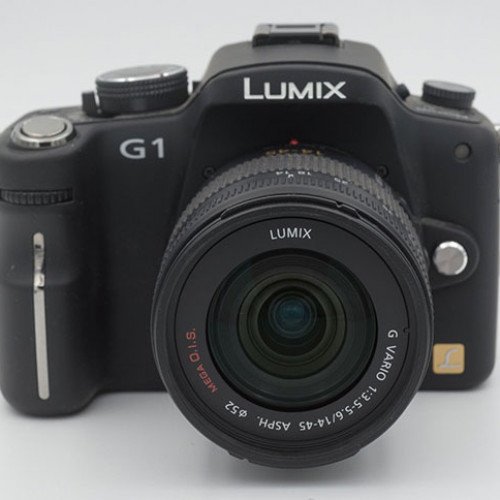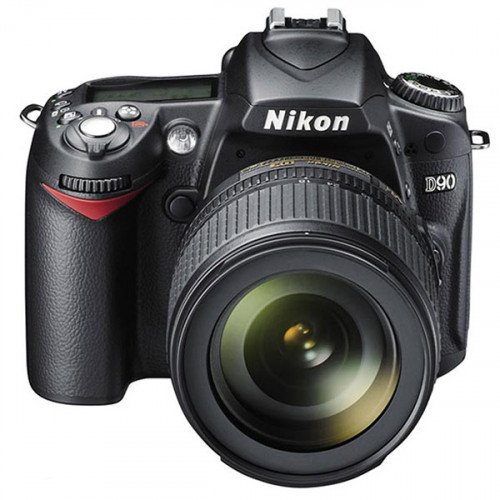Panasonic Lumix DMC-G1, 2008 vs Nikon D90/Canon EOS 5D Mark II, 2008

Panasonic Lumix DMC-G1, 2008
The first mirrorless interchangeable lens camera (MILC) built to the Micro Four Thirds (MFT) system design standard, it dispensed with the SLRs optical viewfinder, reflex mirror, and complex mechanical components, substitutng an electronic viewfinder (EVF) that displays a live view image diectly off the 17.3 x 13mm Live MOS sensor. Eliminating the mirror box results in a smaller, lighter camera, and the smaller image circle of the MFT format allows for smaller, lighter lenses that are interchangeable with all MFT cameras. The G1 used a contrast-detection AF systen that pefromed on a par with the phase-detect systems in contemporary DSLRs, and has the advantage of providing full-time AF before, during and after the exposure. The G1 is considered a landmark camera because it kicked off a robust new market for mirrorless interchangeable lens system cameras.
Statistics for this Xoptio

Nikon D90/Canon EOS 5D Mark II, 2008
The Nikon D90, released in August 2008 edged out the Canon EOS 5D Mark II released in September 2008, as the first DSLR with HD video recording capabilities. The D90, an attractive, well integrated middle-tier DSLR, represented a notable advance over its predecessor, the Nikon D80. Features included a 12.3 MP DX-format RGBG sensor, extended light sensitivity to ISO 6400 in high-boost mode, Live View, automatic correction for lateral chromatic aberration, a maximum full-res burst rate of 4.5 fps, and HD 720p video capture with mono sound at 24 fps. The high-end pro/enthusiast 5D Mark II, the first EOS with video recording capability (Full HD 1080p at 30 fps) featured a full-frame 21.1MP CMOS sensor, sensitivity settings extendable to ISO 25,600, a 15-zone AF system, a 35-zone evaluative, partial, and spot metering system and a maximum full-res burst rate of 3.9 fps. The 5D Mark II established Canon’s 5D line as a professional mainstay and has evolved into the current Canon EOS 5D Mark IV.